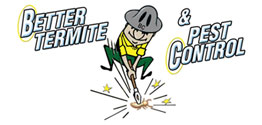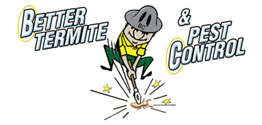A single squeak in the night can incite a million alarming thoughts for a homeowner: rats. The mere mention of these tiny terrors can send shivers down the spine, and for good reason. Rodents, particularly rats, can cause significant damage to your home and pose serious health risks, carrying pathogens that spread diseases.
In this comprehensive guide, we’re diving into the nitty-gritty of rat infestations — how to prevent them, signs you may have a problem, and the best practices for getting rid of these pesky critters. Better Termite & Pest Control aims to empower you with the knowledge to fortify your home against these invaders. Let’s get started on your rat-proofing journey.
Understanding the Rat Menace
Rats, while often portrayed as unhygienic, are incredibly resourceful and hardy creatures that can adapt to most environments, including your home. They seek three primary factors when choosing a dwelling: food, shelter, and access to water. Knowing this, it becomes clear that our mission is to deny them these three essentials.
Why Should You Be Concerned?
The consequences of a rat infestation are dire. Rats can contaminate food, cause structural damage by gnawing through wood and electrical wires, and even cause fires. Moreover, their droppings and urine can pose significant health risks, especially for those with respiratory issues.
Signs You Have a Rat Problem
Early detection is key in rat control. But how do you know if these unwelcome guests have taken residence in your home? Some common signs include:
- Droppings: Finding droppings around your home is a sure sign of a rat infestation.
- Gnaw Marks: Rats must gnaw to keep their incisor teeth trimmed and often do so on wood and wiring, potentially causing a fire hazard.
- Nests: Rats build nests out of shredded materials, such as paper and fabric, in secluded areas of your home.
- Tracks and Rub Marks: Rats follow the same paths and leave grease and dirt on the surfaces they touch, creating visible tracks and marks.
Rat-Proofing Your Property: The Ultimate Prevention Guide
To keep your home free from rats, you must eliminate their access to food and shelter. Here’s how to rat-proof your property:
Seal Entry Points
Rats can squeeze through incredibly small openings. Seal any gaps, cracks, or holes with weather-resistant sealant. Pay special attention to areas where utility pipes enter the home as these are common entry points.
Keep Your Home Tidy
A clean home is less attractive to rats. Store food in airtight containers, clean up spills promptly, and keep trash in sealed containers.
Declutter
Rats love to hide in clutter. Keep storage areas tidy to reduce potential nesting spots.
Regularly Inspect Your Home
Conduct monthly inspections to ensure rats haven’t found their way in. Look for any signs of damage or new entry points.
Landscaping
Rats are excellent climbers and can use branches to gain access to your roof. Trim trees and bushes away from the house to prevent this.
Limit Access to Water
Fix leaky faucets, don’t leave pet water bowls out overnight, and be mindful of standing water in the yard.
Pet Food
If you have pets, don’t leave their food out overnight. Rats are omnivorous and will eat anything.
Composting
Compost bins should be sealed and kept at least 100 feet from your home.
Bird Feeders
Use rat-proof feeders and clean up fallen seeds regularly.
Outdoor Waste
Keep outdoor garbage bins tightly sealed and clean the area around them to eliminate potential food sources.
The Role of Professionals in Rat Prevention
Despite your best efforts, there might come a time when you need the help of a professional pest control service. These experts are trained to locate and seal off rat entry points and can offer you a long-term solution to your rat problems.
Pest Inspections
Regular inspections by a pest control service can catch potential rat entry points before they become a problem.
Professional Exclusion Practices
Professionals can use exclusion methods to keep rats out for good. This includes installing physical barriers like mesh screens and sealing off entry points with cement.
Educating Homeowners
Many pest control services will provide homeowners with the knowledge they need to recognize and discourage rat activity.
Rat Control: What to Do If Prevention Fails
Sometimes, despite our best efforts, rats can still find a way into our homes. When prevention fails, it’s time for rat control. The options range from DIY methods to professional services, depending on the severity of the infestation.
Traps
Traps can be an effective way to control small rat populations. Snap traps and electric traps provide quick and humane kills. Bait stations can also be used, but be cautious if you have pets or small children.
Rodenticides
While not the first choice for many homeowners, rodenticides can be effective when used correctly. They should be placed in tamper-resistant bait stations to prevent accidental poisoning of non-target animals.
Humane Trapping
For those who prefer not to harm the rats, live traps can be used. The trapped rats can then be released far away from your home, but be sure to check local laws and regulations regarding the relocation of wildlife.
Repellents
There are many DIY and commercial repellents available. These can include ultrasonic devices, natural remedies like peppermint oil, and even predator urine.
Maintaining a Rat-Free Home
Even if you’ve successfully eradicated rats from your home, the battle isn’t over. Ongoing vigilance is necessary to keep them at bay. Continue the practices that have been successful for you and be alert for any signs of their return.
Ongoing Inspections
Keep up with monthly inspections to ensure there are no new entry points.
Quick Action
If you do notice any signs of rats, take action immediately to prevent the infestation from growing.
Communication
If you notice rat activity, be sure to alert your neighbors. If rats are in one home, they’re likely in others nearby.
Professional Maintenance
Regular visits from a pest control professional can help maintain a rat-free environment.
A Rat-Free Future
By following the guidelines laid out in this post, you can significantly reduce the risk of a rat infestation in your home. It’s a matter of understanding what attracts rats, locating potential entry points, and employing preventative measures. Should rats have already made themselves at home, taking swift and appropriate action is key. Remember, awareness and education are your strongest tools in the fight against rats.
Don’t let a rat infestation ruin your peace of mind or your home. Take the necessary steps to protect your property and your family. If you need assistance, don’t hesitate to reach out to Better Termite & Pest Control. Our team of experts is committed to keeping your home safe and pest-free. With a little effort and knowledge, a rat-free future is within your reach.




